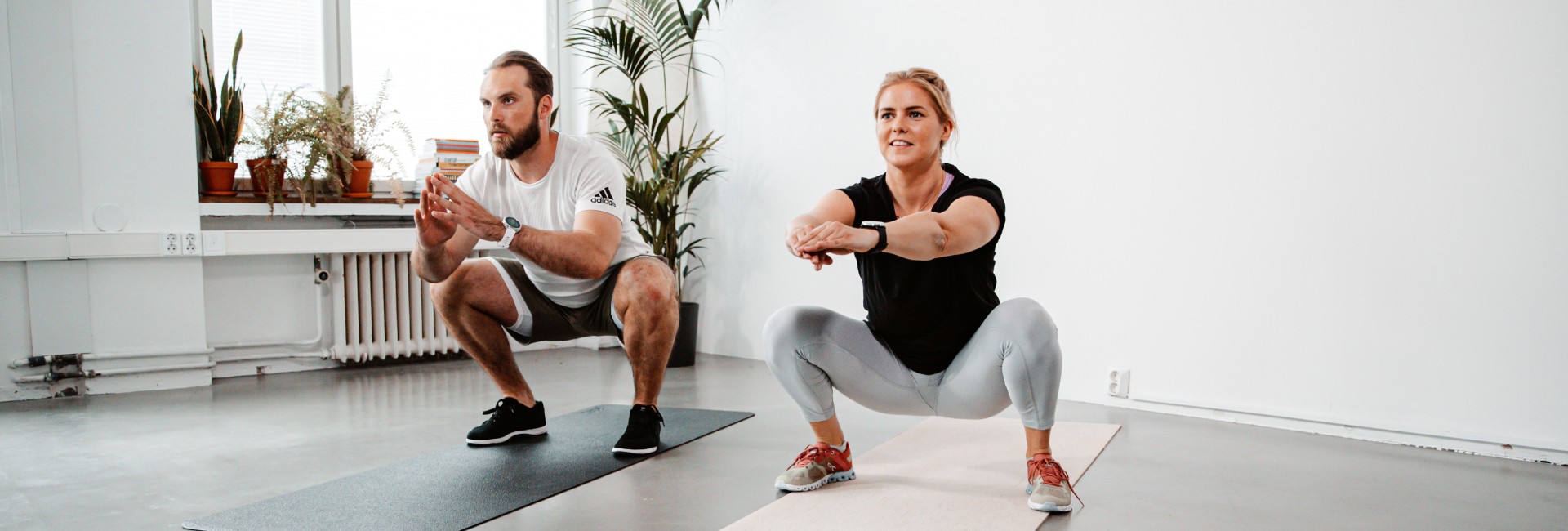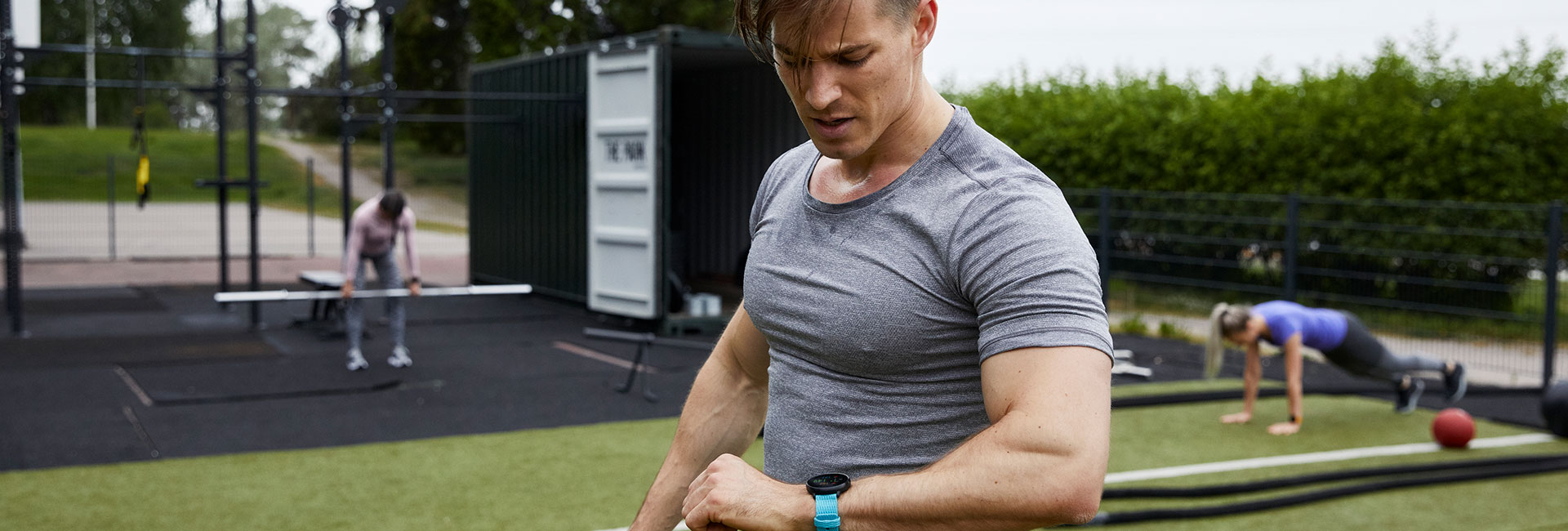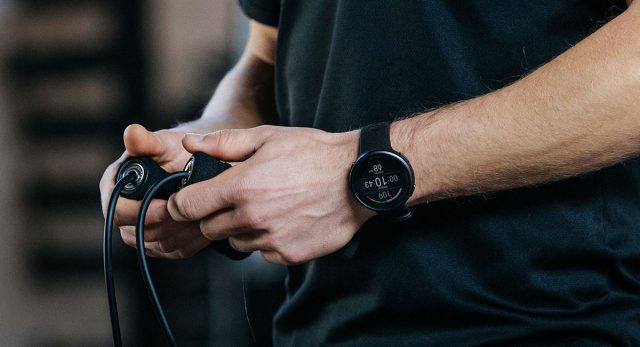You could probably do with some LIIT in your life – and no, we’re not talking about a Long Island Iced Tea.
Low-intensity interval training (LIIT) is a calmer, less sweaty take on HIIT. But which exercises does it involve, and how can you incorporate them into your training plan? Here’s the low-down on low-intensity.
What is low-intensity interval training?
Low-intensity interval training consists of higher and lower intensity intervals – just like HIIT, except that the difference between the higher and lower isn’t as intense. Think of LIIT as a jog and HIIT as a sprint.
LIIT is focused on zones 2 (60–70% MHR) and 3 (70–80% MHR).
LIIT is a form of heart rate training, which means you’ll need to know your maximum heart rate (MHR) and use a heart rate monitor or sports watch to track this as your workout.
Don’t know your maximum heart rate? Use our calculator.
While HIIT will see you working out in heart rate zones 4 (80–90% MHR) and 5 (90–100% MHR), LIIT is focused on zones 2 (60–70% MHR) and 3 (70–80% MHR). Use your heart rate monitor to keep you in these zones during your intervals and to watch your heart rate drop as you rest. When it hits the grey zone (Zone 1 – 50–60% MHR), you know it’s time to get back into your workout again.
LIIT vs. HIIT
When it comes to LIIT vs. HIIT, you’ll probably be surprised to learn that the only real difference between these two types of interval training is time and intensity.
While HIIT will push you to your absolute limit in terms of exertion, LIIT has a gentler pace.
While you usually would allow around 20 to 30-minutes for a session of HIIT, you’ll need 40 to 60-minutes to reap the benefits of LIIT. On the flip side, while HIIT will push you to your absolute limit in terms of exertion, LIIT has a gentler pace.
There’s a common misconception that in order for exercise to be effective, it needs to be intense. However, a study published in the Annals of Internal Medicine shows that LIIT and HIIT have a similar effect on weight loss. Researchers from the School of Kinesiology and Health Studies at Queen’s University in Kingston, Ontario, observed separate groups of people doing LIIT and HIIT workouts and found they had comparable results.
Benefits of LIIT
One of the best things about LIIT is that it’s suitable for anyone, no matter your age, exercise experience, or fitness level. The low intensity means it’s not too strenuous when working out and places less strain on your joints, ligaments, and tendons. That means it has a reduced risk of injury in comparison to HIIT.
LIIT is suitable for anyone, no matter your age, exercise experience, or fitness level.
As we’ve seen above, LIIT does burn fat, so it’s great for weight loss. It also builds both your cardiovascular and muscular endurance, improving your blood circulation and increasing blood flow. It has also been shown to lessen fatigue and improve cognitive health in older adults.
How to do a LIIT workout
There are many ways to try a LIIT workout. It could be something as simple as jogging for 90-seconds on the treadmill followed by three to five minutes of walking to recover, then going back up to a jog again.
You can also use low-intensity forms of exercise such as barre, pilates, and power yoga in a LIIT workout. Simply alternate between postures and movements that raise your heart rate to zones 2 or 3 for a minute or two before switching to a series of stretches that drop your heart rate back to zone 1 for a few minutes. Then repeat.
Looking for a simple circuit to do at home? Try this one:
- 10 squats
- Rest for 90 seconds
- 10 push-ups
- Rest for 90 seconds
- 30-second plank
- Rest for 90 seconds
- 10 sit-ups
- Rest for 90 seconds
Start with a short warm-up. As LIIT is low-impact, it doesn’t need to go for long. Try a few minutes of gentle yoga or walking/jogging.
You should also try and keep moving during your rest interval by doing some gentle stretches or walking around slowly. You want to let your heart rate decrease so keep your movements easy.
All four exercises = one circuit. Aim to do at least three circuits, gradually working up to four or more as your fitness level improves.
The most important things to remember are:
- keep an eye on your heart rate zones. You don’t want to go above zone 3 when you’re really working out. You also want to be ready to go again once your heart rate drops back to zone 1.
- make sure your low-intensity workout goes for at least 40 minutes (in order to reap the benefits).
So, set aside the time and power your way through your low-intensity workout.
If you liked this post, don’t forget to share so that others can find it, too.
Or give it a thumbs up!
I like this article
Please note that the information provided in the Polar Blog articles cannot replace individual advice from health professionals. Please consult your physician before starting a new fitness program.





